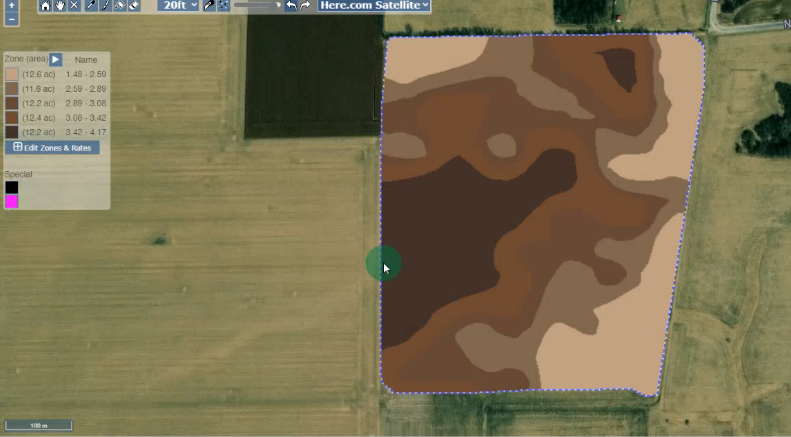How to Write a Precise Seed Prescription in Under 5 Minutes
Welcome! I'm Tyler Lund with Veris Technologies and I want to share how to write a seeding prescription in a few easy-to-follow steps. This is a really simple process when done on the Veris FieldFusion™ platform. It’s designed to take soil sensor data and turn it into management zones which will then let you write scripts.
First, I want to show what the data actually looks like. Here's this organic matter layer, it's made with an optical sensor. We can see the variability across the field.
Organic Matter Layer
We can even show what the USDA government soil survey looks like and we can see inside this soil survey unit.
USDA Government Soil Survey
We can also show what a grid would have looked like if we were using grid sampling for these seeding scripts.
Grid Sample Map
So as you can see, there are some areas where that sample could have represented the whole area. But then in other areas we get varying sample results. If we worked off of this map alone, we would miss those pockets of soil that a planter can make use of. This helps make it clearer as to why we've collected this soil sensor data and how it can be helpful in identifying areas that might need varying seed populations. But it’s not helpful until we put it to use, so let's do that.
Here's the script writing, there are more advanced ways to do it but we're just going to choose this example to use to show the organic matter layer and write a pretty straightforward recommendation on it.
Here, you can see we've got the darker, more rich soil and the lighter soil. In this part of the country, in central Illinois, usually a pretty standard seed rate is 34,000 so we will apply that to our medium OM soil. When we get into our better soil with more productivity, we can bump that number up closer to 36,000 or 38,000.
Note: If you have more information about a hybrid and its population curves based on the yield environment, you can plug that in, but I'm just showing you how to actually write the prescription.
That's all it takes. Now, we've got the rates prescribed. You can name it and save it to your files and upload it to the John Deere Operations Center. You can also download it and plug it into a lot of different programs that feed straight into your planter.
Now you have a seed prescription which shows you the amount of seed that will be needed along with planting zones. This tool can be used to save both time and money, I hope everyone gets the chance to use this and see how it can help them farm and manage better.
Finished Seed Prescription
I encourage you to stay tuned for some additional posts on more advanced ways of managing your field with seed rates and other inputs using this platform. Thanks for reading!







